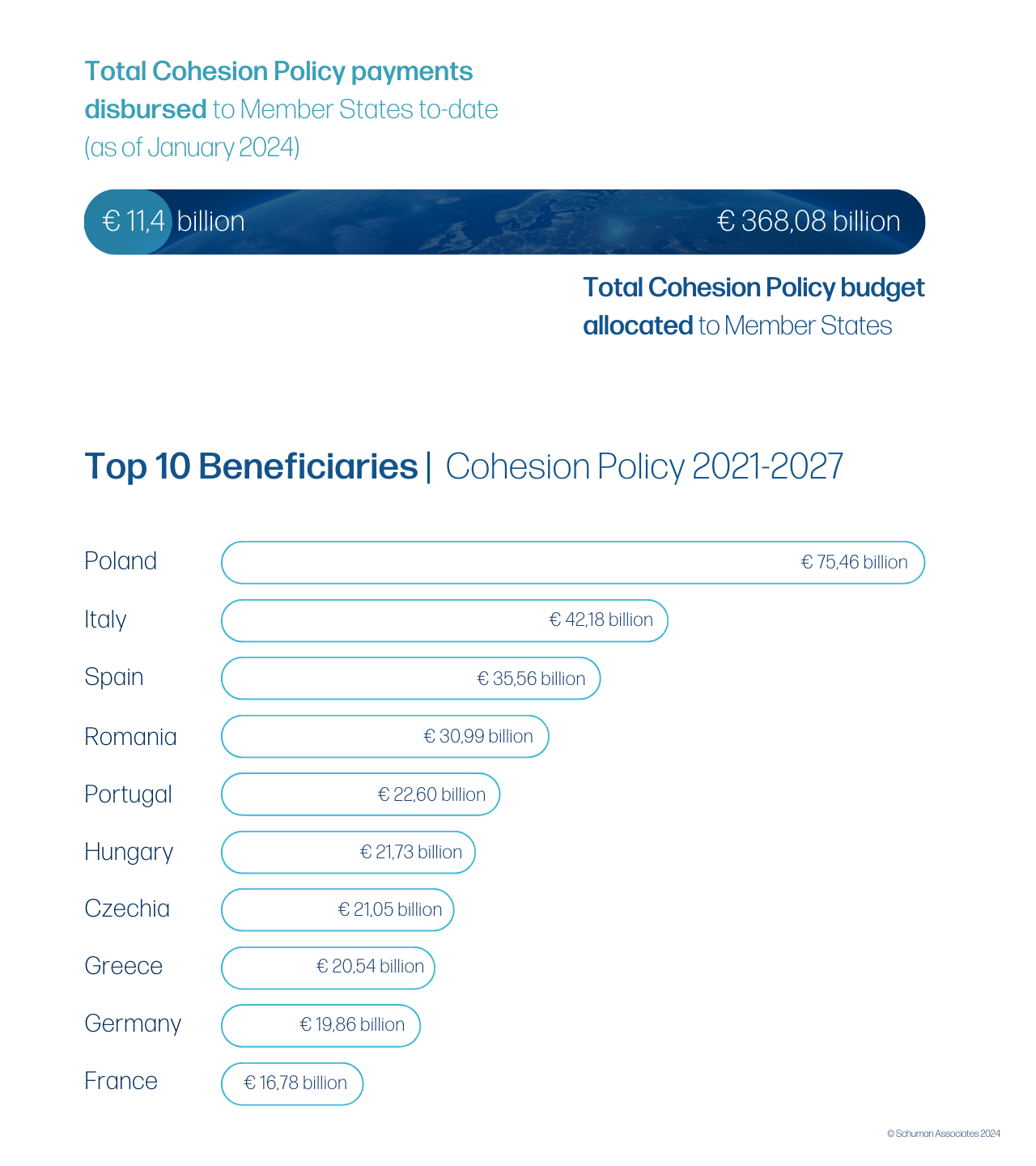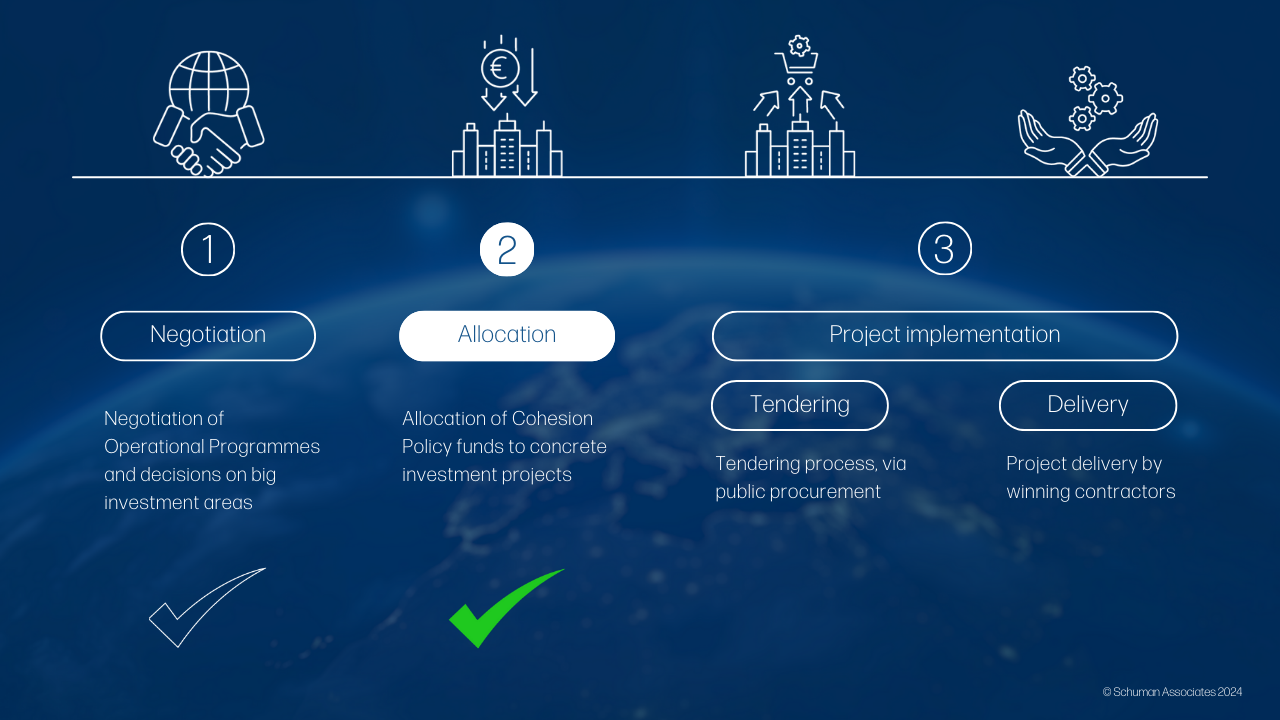Over €1 trillion to be spent by 2029: Recovery and Resilience Facility & Cohesion Policy funds
Now is the turning point for Member States to spend their EU funding
EU Member States need to spend over €1 trillion by 2029, with 2024 as the turning point in the funds' execution and planning.
This unprecedented level of EU funding available at country level is channeled through two key instruments:
- The Recovery and Resilience Facility (RRF): to support Member States with the exceptional challenges following the COVID-19 pandemic
- Cohesion Policy: the EU's traditional instrument to bring parity between and within Member States and their regions.
Outlook and opportunities
EU funds generate steady and continuous business opportunities, with constant progress in the next few years.
- The Recovery and Resilience Facility presents more immediate opportunities, with projects advancing and expected to be finalised by August 2026.
- Cohesion Policy offers more medium-term opportunities, building the pipeline for the years ahead.
Recovery and Resilience Facility
Full-speed implementation: tendering stage
1. Funding status
Member States' implementation of their Recovery Plans had a slow start in 2021/2022. This picked up in 2023, though by year's end, less than 40% of the allocated RRF budgets had been transferred by the Commission to the Member States. These transfers are conditional to meeting specific targets and milestones.
To secure the transfer of the remaining funds, Member States need to increase their efforts in implementing the investments foreseen in their Recovery Plans: all RRF investments must be completed by summer 2026.
2. Where we are now
2024 and 2025 are the RRF 'heavy lifting' years.
Member States used the first years of RRF implementation to allocate the funds to concrete investment projects. Going forward, we expect 2024 to see a peak in public procurement procedures for goods, works and services needed for the implementation of investments. This trend is likely to continue well into the first half of 2025 and ease down in late 2025 / early 2026.
Cohesion Policy
Fund allocation: projects' pipeline building stage
1. Funding status
2. Where we are now
2024-2025 are dedicated to allocating Cohesion Policy budgets to concrete projects and investments in most Member States.
Most funds will be disbursed through calls for proposals to be launched throughout 2024 and 2025, whereby public and private entities will be invited to propose worthy investments and initiatives.
The first wave of tenders is expected this year, with accelerated growth throughout 2025-2027.
How we can help
By accepting you will be accessing a service provided by a third-party external to https://www.schumanassociates.com/





